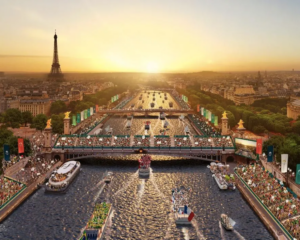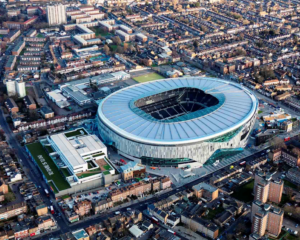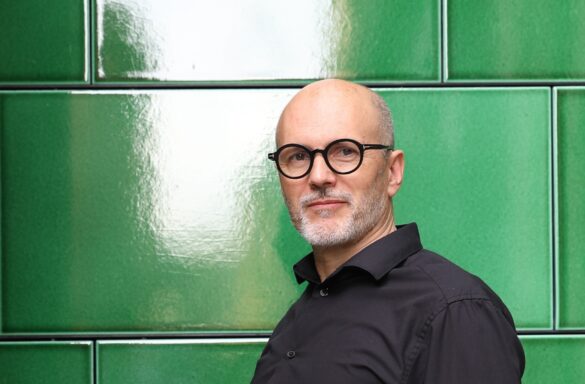Article
To stadium or not to stadium
11:36:44 26 August 2024
51.478710 -0.201702
The Paris Olympics just finished and Paralympics about to begin, we’ve been ruminating on the future of sporting venues and the effect they have on the environment, local communities, and host cities. The Olympic Games represents the coming together of nations to celebrate great feats of athletic achievement, but it also demands an enormous level of financial, physical, and social investment to support and underwrite the quest.
Learning from the Olympics
After the fiscal disasters of the Montreal (1976) and Moscow (1980) Olympics, with both cities running billions of dollars overbudget, future prospective cities viewed the Games as a form of financial suicide. In 1984, the LA Olympics surprised everyone, with Los Angeles delivering its Games on a shoestring budget of $500 million (adjusting for inflation, $1.5 billion today) via the repurposing of existing facilities and very few new permanent structures. Not only did the LA Olympics organising committee make a tidy profit, but it also – to a degree – leveraged the event to generate city renewal, helping transform fragmented and in some places impoverished city sites, providing opportunity in terms of jobs, and leaving a lasting legacy in the form of the LA84 Foundation, a not-profit set up to promote and grow youth sports in southern California.
Since LA84, the Olympics has been something of a mixed bag. London (2012)’s heavy investment in infrastructure has been shown to have, on balance, served the city reasonably well, at least in the short to medium term. Rio (2016), however, was left debt ridden by its own staging of the event, its leftover stadia a textbook case in the creation of white elephants. Not a single Games has managed to emulate LA84’s financial prudence. This uneven and always costly legacy is at least in part tackled by the Olympic Agenda 2020, a strategy committing the event to a raft of sustainable goals, and which in effect reintroduces the razor-sharp refit-and-adapt approach championed by LA84, with greater consideration given to host community, broader city, and environment.

Hence opening day at the Paris Olympics, the ceremony held on the Seine rather than in a brand new and eyewateringly expensive stadium. Pledged to be the world’s first ‘climate positive’ Olympic Games, Paris’s vision for the 2024 Games couldn’t have been clearer: ‘Build less, better, and usefully’. Committing to taking sport out of the stadium, the Paris Olympics organising committee oversaw the installation of temporary infrastructure that opened viewing up to quintessential Parisian sites and monuments. It also put its best foot forward in the name of different kind of legacy, striving to clean the Seine, modernising the city, rethinking crowded metro links, and upgrading historic sites. So, whilst the Olympics is primarily designed to accommodate sport, the (aimed for) collateral value is clear, most notably the way the spectacle is integrated into the physical, social, and cultural fabric of its hosting city.
How it all goes terribly wrong
The so-called ‘new norm’ Olympics, as exemplified by Paris, is a strategy for design solutions that go beyond the sports facility itself, comprising of a flexible operating plan that considers all facets of the user experience, now and in the future. When it speaks of legacy, it means the opposite of the grand monumental legacies of past Games. It means a Games remembered for being sustainable, affordable, light on its feet, a software of extraordinary events. However, whatever the problems of achieving new-norm Games, it’s a strategy rolled out every four years, in select cities. Consider the much higher, longer-term consequences that come with the design and build of common sports stadia – football, NFL, and baseball stadiums, for example. Hosts of LA84 or Paris-type Olympics can lean into temporary lightweight infrastructure and leverage novel festival-like activations that they know users will rally around, but cities that require – or at least, say they require – the everyday stadium are after something quite different: a stadium that is home to and worthy of a sports franchise or club that comes with a long history, enormous reputational value, and a large chunk of the voting public.
Today, this kind of stadium can be a billion dollar-plus development. Quite an investment, especially given that it is generally designed for single-purpose large-scale events, primarily sports games and concerts, and remains empty for the rest the year. The typical North American NFL, MLB and MLS stadium is found to host less than five alternative events beyond regular season games each year. In addition to its relative underutilisation, a stadium’s design, build, and managing is always answerable to a range of stakeholders, with often different interests and priorities. For its sponsors, the focus is largely on generating positive economic impact, with cities relying on the direct and spinoff effect of everything they suppose the stadium’s club or franchise attracts and stands for. For residents who call the stadium’s neighbourhood their home, the focus is its capacity to generate positive social impact. Whilst the two certainly can and should co-exist, the latter is often disregarded in favour of the former. As a result, its economic benefits can serve as catalyst for unwanted commercial developments, hotels, traffic, congestion, gentrification, and policing and surveillance of a neighbourhood, which amounts to significant social cost for the host community. This is the stadium that ends up being irrelevant and monolithic, a tangible and intangible barrier to entry, towering over and excluding its host neighbourhood.

For a worst-case real-world example of how this plays out, see LA’s SoFi Stadium, currently shared between the Los Angeles Rams and Los Angeles Chargers. In 2019, Inglewood’s mayor James Butts made striking promises about how a new stadium would rejuvenate the ‘struggling’ neighbourhood, declaring that ‘SoFi would lead to the Genesis Effect’, a somewhat ill-judged reference to a technological device in Star Trek II: The Wrath of Khan and its capacity for transforming uninhabitable planets into land suitable for human colonisation. Unconvinced by surface level improvements and glossy promises, and suspecting further commercialisation would inevitably raise housing prices and push people out of their homes and the area, locals collected 20,000 signatures (20% of Inglewood’s population) petitioning to vote on the proposed stadium, a request rejected by city council. The project ended up costing a whopping $5 billion, making it the world’s most expensive stadium, and has had the effect, argue its detractors, of gutting the neighbourhood, with rents and the average cost of housing rising between 2016 and 2022 by 59% and 90% respectively. The exceedingly expensive device has rendered a land once home to a diverse community of humans relatively uninhabitable to all but the few.
Getting it reasonably right
So, if we are to build them, how do we create stadiums that are well-loved and well-utilised, extending their services and value beyond their initial reason for being? First, councils, developers, architects, and sport clubs would do well to take a collaborative approach to the design of the stadium and the effect it has on surrounding neighbourhoods, constantly engaging with and inviting participation by local community representatives and groups in order to understand and find solutions to their needs and wants. Second, operators need to work in the interest of their host communities to identify opportunities for alternative use beyond game day and the occasional concert. Again, this means engaging with local residents, organisations, and businesses to understand what the neighbourhood lacks, what they want and need, and how the introduction of a stadium might add value.
Unfortunately, while planners, developers, and asset managers may think they are actively including their community, much of the research shows that engagement typically rings hollow, with participation limited to groups seen as legitimate and most in tune with developer objectives, and reserved as a line item in the pre-design phase of a given project. Seen this way, ‘community engagement’ tends to inform rather than consult, is at best short-lived, and at worst a rubber-stamp exercise. The end result, the stadium as gargantuan alien, serving no one but itself and a select set of stakeholders.
This is SoFi, but could just as easily be Tottenham Hotspur FC, which is located in the London borough of Haringy, and which in the early stages (2012) of its planning for a replacement stadium appears to have made a similar set of mistakes. Home to wards that are amongst the most deprived in England, the borough has some of the highest rates of unemployment, child poverty, obesity and diabetes, teenage pregnancies and domestic abuse. At the time of the new stadium’s planning, crime in Haringey was 78% higher than the London average, the medium gross weekly pay in the area was 17% less than the national average, and educational attainment among the lowest in the country. The planning threatened largescale demolition of local shops and businesses and dropped commitments under section 106 agreements to affordable housing, reducing liability from £16 million to a paltry £477,000. Its community engagement processes called out by by a coalition of community interest groups – Our Tottenham – as a farce, rhetorical, and non-consultative, and facing accusations that planning threatened to socially ‘cleansing’ or ‘engineering’ the neighbourhood, the club capitulated, revised its plans, adopted a set of Community Charter Principles, and reinstated provision for affordable housing.

Today, the club has gone on to to deliver 400-plus homes (70% of them affordable), a clutch of schools, and some 3,700 jobs. At the same time, it has created a stadium that as well as designed to accommodate sport and entertainment, delivers a range of community services and programmes, and aims to be available to the local community 365 days a year. In working much more collaboratively with the community, it goes well beyond its primary function, placing greater weight on the social outcomes of sport, its services and amenities reaching out and taking root in the borough. Addressing the area’s significant issues, it has positioned itself as a civic building and community asset. A club-commissioned analysis of its socio-economic impact for the 2021/22 season found that the club contributed £900 million to London’s economy, much of it to its home and nearest boroughs. Well-loved and well-utilised, it is, despite continuing to attract controversy, a source of genuine local pride. Let’s spend a moment examining how it got here.
Well-loved
The club is recognised as genuinely committed, via its charitable arm Tottenham Hotspur Foundation and wider schemes, to creating life-changing opportunities for people in north London. Through various programmes such as Street Soccer Academy, Premier League Kicks, and Shape Up With Spurs, football is leveraged as a vehicle for social engagement and participation, particularly amongst the area’s disadvantaged youth. The Street Soccer Academy has been effective in giving participants hope, health, and a greater sense of wellbeing. The Foundation’s To Care is To Do programme aims to help reduce the gap in educational achievement between children in care and their peers through mentoring, work experience, and extra-curricular activities. In addition to these programmes, the new stadium houses the London Academy of Excellence, a selective Sixth Form school sponsored by the club which prioritises local students from disadvantaged backgrounds and aims to give Tottenham’s brightest youth the best possible chance of finishing their education and access top universities. These programmes are doing real things for real people.

Well-utilised
Clearly, going beyond its primary function is fundamental to the success of a well-utilised venue. Tottenham Hotspur Stadium hosts a wide variety of events, the pitch designed to accommodate football, NFL, rugby and boxing. Beyond sport, the stadium is used for six concerts and other live entertainment each year. On weekdays, its executive boxes are open for people to have health checks with the club’s own ‘Spurs Nurse’. Blood donation events are regularly held on the ground to encourage members of communities traditionally less likely to engage to become donors. During the pandemic, the stadium served as a vaccination clinic for 9,000 locals, became a drive-through testing facility, and effectively became North Middlesex Hospital’s women’s outpatient service, facilitating 41,500 medical appointments. General election vote counts have been held there, and so have job fairs to exhibit job and apprenticeship opportunities to local people. It’s is home to a local microbrewery and has partnered with local businesses to regenerate historic areas of the Tottenham High Street. When it comes to the stadium’s role in the community, it wants to be something for everyone
All the same
To look at it now, it’s inconceivable to think that Tottenham once contemplated upping sticks and moving across the city into a vacated 2012 Olympic stadium. Unfortunately, staying put is not by any means a given, particularly in the US, where franchises have, can, and will abandon stadiums and cities for fresh pastures, the new stadium often substantially subsidised by the taxpayer, such is the frenzied (and economically misguided) nature of competition between cities for their business. The most recent example sees baseball’s Oakland Athletics leaving Oakland for a second time, now to a billion-dollar retractable roofed stadium off the Las Vegas Strip, a move that would be considered anathema to Spurs fans, the wider Haringey community, and the council, which has invested millions of public monies into supporting infrastructure. It’s hard enough seeing a generations-old club relocate in the same city, let alone to another city entirely.

Truth is, whether club or franchise stays loyal to its original community or not, it’s clear that the benefits of a stadium to its local area – even one as involved as Tottenham appears to be – are generally uneven and will in some shape or form have a marked affect on its character. In the Premier League’s 2012/13 season, average house prices in stadium post codes were found to have risen over the past 10 years by 137%, substantially more than the national average. These numbers have increased exponentially, especially in homes to new stadiums. In 2018, its stadium almost finished, the average house price in Spur’s immediate surrounds was 655% up on what it was in 1997. Today, houses near Tottenham sell for an average of more than seven times the area’s average earnings, this despite the supply of affordable housing. If these figures all stand up, then this is the meaning of gentrification, plain and simple.
Looking forwards
We began by looking at the Olympics, its mistakes, the outlier that is LA84, and how it aims – in the name of sustainability – to do everything but build a brand-new stadium. In truth, whatever the approach, the mega-event may have had its day, with a whole range of economic, social, and environmental factors leading to a decline in cities’ appetites for hosting them. Even Paris and its new-norm supposedly affordable format has cost an estimated $8.7 billion, more than double its budget, and which, with the average Games making $6 – 8 billion in revenue, means a deficit of at least $700 million. Add to this the view that while a well-run stadium may provide its immediate neighbourhood with a sustained economic bump, its long term contribution to the wider city has been shown to be limited in reach and scale. ‘Take whatever number,’ says economist Victor Matheson, ‘the sports promoter says, take it and move the decimal one place to the left. Divide it by ten, and that’s a pretty good estimate of the actual economic impact.’
None of which leaves the Olympics, governing authorities, stadium builders, or hosting and local communities in a particularly good place. All is not lost, however. Just as LA84 turned the perception of the economic and social cost of the Games on its head, persuading an initially highly sceptical city of the short- and long-term virtues of Los Angeles holding the Games, so it’s entirely possible that a new way of structuring and paying for net zero interventions will do the same for future events and builds. Clearly, whatever happens, the decision as to whether to have a stadium or embark on adapting existing assets or to simply leave well alone, can only be decided on a case-by-case basis, in context of the long term benefits to location and locale. Finally, in terms of the fraught subjects of the cost and enduring legacy of an Olympic or stadium-sized intervention, it’s worth noting that one of Los Angeles’s conditions for putting on the 1984 games was that not a single penny would come from the public purse and that its abiding vision for what would go on to become the greatest games in the modern era was that it should aim simply to be good enough, lessons it seems to have at least in part since forgotten, and which Brisbane, having taken three years to only decide on a direction, would do well to observe.
Eloise Dalla Costa is a strategist and designer at FreeState. Dave Waddell is a researcher and strategist, also at FreeState. If you would like to know more or are working on the kinds of projects explored in this article, please get in touch. Nothing we like more than a good chat.
All images courtesy either Unsplash, Adobe Stock or Paris Olympics and Tottenham’s official websites.



